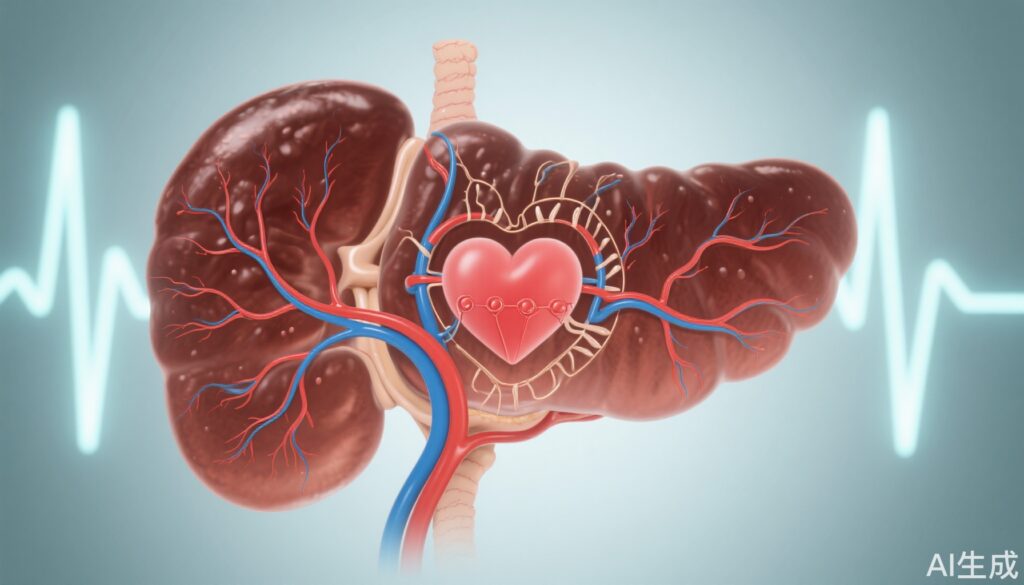Highlight
- Subclinical primary aldosteronism (PA) is associated with a twofold or greater risk of major adverse cardiovascular events (MACEs), independent of blood pressure.
- Key risk markers include suppressed renin (≤4 ng/L) and elevated aldosterone-to-renin ratio (ARR ≥70 pmol/L per ng/L).
- These findings challenge the traditional paradigm that only overt or hypertensive forms of PA are clinically relevant.
- Study results suggest the need to refine hypertension screening and management strategies to account for subclinical PA.
Background
Primary aldosteronism (PA) has traditionally been associated with secondary hypertension and overt cardiovascular morbidity. The condition, resulting from autonomous aldosterone secretion by the adrenal cortex independent of renin-angiotensin regulation, is a well-established contributor to resistant hypertension, left ventricular hypertrophy, and increased cardiovascular event rates. Conventional guidelines recommend screening for PA in patients with resistant hypertension or specific high-risk features. However, mounting evidence suggests that a spectrum of renin-independent aldosterone excess exists, potentially including individuals with normotension or only mildly elevated blood pressure. The burden of disease attributable to these subclinical forms has been poorly characterized, with most prior studies focusing on surrogate endpoints like blood pressure, arterial stiffness, or cardiac remodeling.
Study Overview and Methodological Design
The recent prospective cohort study by Goupil et al. (Circulation, 2025) aimed to fill this knowledge gap by directly examining the relationship between subclinical PA and hard cardiovascular endpoints. Researchers analyzed data from 2,017 adults within the CARTaGENE cohort, a randomly sampled, population-based Canadian database. Inclusion criteria encompassed adults without known adrenal pathology or overt PA. The median age was 56 years, with a predominance of White participants (92%). Approximately half had blood pressure readings >130/80 mm Hg, while diabetes and known cardiovascular disease were rare (7% and 3%, respectively).
Key biochemical measurements included plasma aldosterone, renin concentrations, and calculation of the aldosterone-to-renin ratio (ARR). Subclinical PA was operationally defined by suppressed renin (≤4 ng/L) and/or elevated ARR (≥70 pmol/L per ng/L), in keeping with prior epidemiologic and guideline-based thresholds.
The primary outcome was incident major adverse cardiovascular events (MACEs), a composite of myocardial infarction, ischemic or hemorrhagic stroke, hospitalization for heart failure, and cardiovascular death, assessed over a median follow-up of 10.8 years.
Key Findings
During the follow-up, 2.8% of participants experienced a MACE, with myocardial infarction being the most common, followed by stroke and heart failure hospitalization. Notably:
- Suppressed renin (≤4 ng/L) was associated with a 2.1-fold increased risk for MACE (adjusted hazard ratio [aHR] 2.10; 95% CI, 1.21–3.72).
- An ARR ≥70 pmol/L per ng/L was linked to a twofold higher MACE risk (aHR 2.03; 95% CI, 1.09–3.80).
- Participants meeting both criteria (suppressed renin and elevated ARR, ~21% of cohort) had a 2.42-fold higher risk for MACE (aHR 2.42; 95% CI, 1.25–6.48).
- These associations were robust to adjustment for blood pressure, age, sex, diabetes, and baseline cardiovascular disease.
- There was no statistically significant association between aldosterone concentration alone and MACE risk, highlighting the importance of renin suppression and ARR.
Importantly, the increased risk was evident even in participants with normotension, indicating that traditional blood pressure-based screening misses a substantial at-risk population.
Mechanistic Insights and Pathophysiological Context
Aldosterone excess exerts deleterious cardiovascular effects through multiple pathways beyond blood pressure elevation. It promotes myocardial and vascular fibrosis, endothelial dysfunction, inflammation, and oxidative stress, contributing to structural cardiac changes and atherosclerosis. Suppressed renin in the context of mild aldosterone excess suggests autonomous adrenal secretion, uncoupled from physiological sodium or volume status, leading to a maladaptive state that predisposes to target organ damage.
Experimental models and observational studies have shown that even modest elevations in aldosterone, when renin is suppressed, increase left ventricular mass, impair diastolic function, and promote arrhythmogenesis. These processes can occur well before overt hypertension develops, reinforcing the biological plausibility of the observed associations in the current study.
Clinical Implications
The findings have profound implications for clinical practice:
- They challenge the dogma that normotensive or mildly hypertensive individuals are at low risk for aldosterone-mediated cardiovascular injury.
- Current guidelines recommend PA screening primarily in patients with hypertension, but nearly half the at-risk population in this study was normotensive.
- These data support a more nuanced, mechanism-based approach to early hypertension management, emphasizing detection of endocrine drivers such as subclinical PA.
- Pharmacologic intervention targeting the mineralocorticoid receptor (e.g., with spironolactone or eplerenone) may be beneficial even in patients with normal blood pressure but evidence of renin-independent aldosterone excess, although prospective interventional trials are needed.
For illustration, consider a 54-year-old woman with no hypertension but incidentally found to have suppressed renin and elevated ARR during a workup for fatigue. Despite normotension, her risk for MACE over the next decade could be twofold higher than the general population—a finding that would previously have gone unrecognized.
Limitations and Controversies
Several caveats are worth noting:
- Definition of subclinical PA relied on biochemical markers rather than confirmatory suppression testing or imaging, raising the possibility of misclassification.
- The cohort was predominantly White and middle-aged, limiting generalizability to other ethnicities and age groups.
- While the study adjusted for multiple confounders, residual confounding by unmeasured factors cannot be excluded.
- This was an observational association study; causality cannot be definitively established without interventional data.
- Potential impact of antihypertensive therapy, dietary sodium, and medication adherence on biochemical markers was not fully explored.
Expert Commentary or Guideline Positioning
Dr. Gregory Hundemer, a study investigator, emphasized the paradigm shift required: “We need to move away from the ‘one-size-fits-all’ approach to early hypertension management and toward a more personalized approach targeting the specific mechanisms that drive hypertension and cardiovascular disease for a specific individual.”
Dr. Wenyu Huang, an endocrinologist unaffiliated with the study, noted: “Previously, we only recommended screening for primary aldosteronism in certain patients, and now the [Endocrine Society] guidelines say we should screen everyone with hypertension. But this study goes further, as almost half of the participants had normotension. It’s an association study, and it doesn’t state causation, but this is something that will need our attention.”
The 2016 Endocrine Society guideline recommends screening for PA in patients with hypertension and select high-risk groups, but does not address normotensive individuals. These new data underscore a potential need for revised recommendations (Funder JW et al., J Clin Endocrinol Metab. 2016;101(5):1889-916).
Conclusion
Subclinical primary aldosteronism is a significant, underdiagnosed contributor to major cardiovascular risk, even in the absence of hypertension. Suppressed renin and elevated ARR identify individuals at heightened risk for MACE, challenging traditional blood pressure-centric screening paradigms. Future research should focus on prospective interventional trials and cost-effective screening strategies to better define the role of subclinical PA in cardiovascular prevention.
References
1. Goupil R, Desbiens LC, Merabtine A, et al. Subclinical Primary Aldosteronism and Major Adverse Cardiovascular Events: A Longitudinal Population-Based Cohort Study. Circulation. 2025 Jul 9:10.1161/CIRCULATIONAHA.124.073507.
2. Funder JW, Carey RM, Mantero F, et al. The Management of Primary Aldosteronism: Case Detection, Diagnosis, and Treatment: An Endocrine Society Clinical Practice Guideline. J Clin Endocrinol Metab. 2016;101(5):1889-1916.
3. Hundemer GL, et al. Renin-Independent Aldosterone Secretion and Cardiometabolic Risk. Hypertension. 2023;80(2):154-162.



